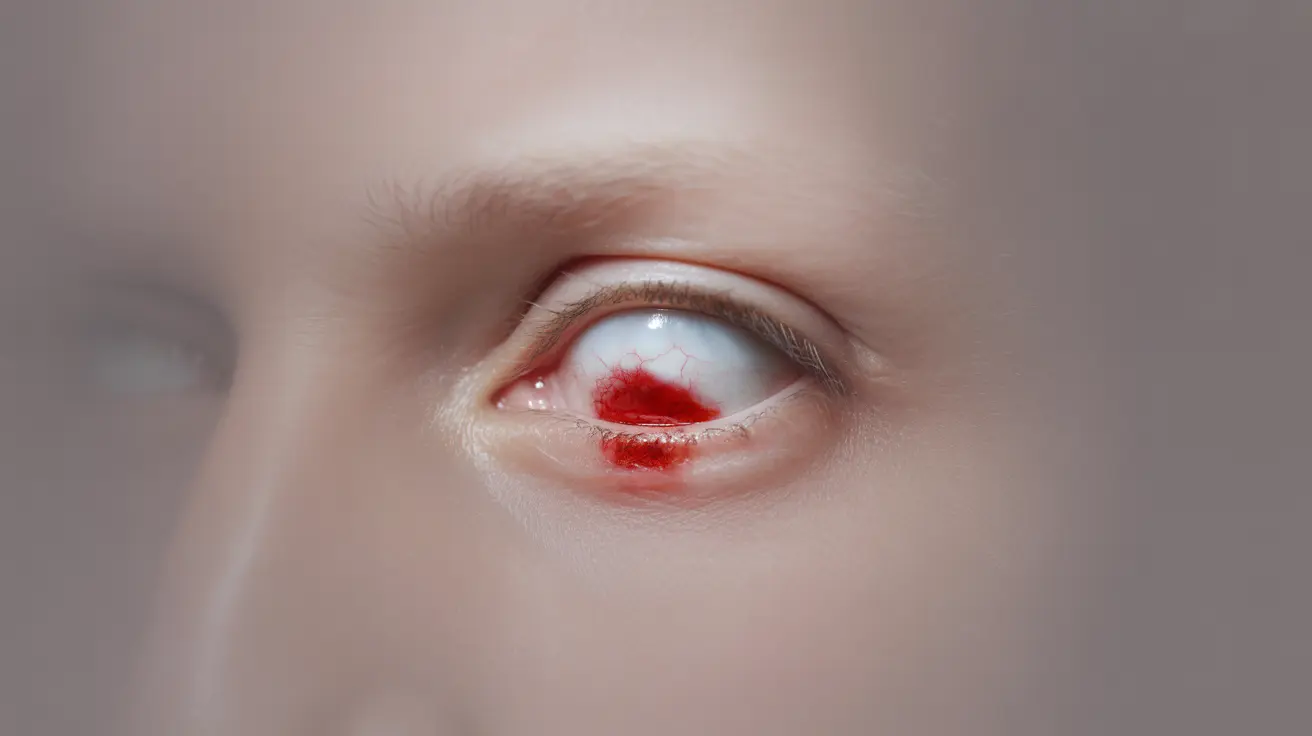Noticing blood in the corner of your eye can be alarming, but understanding the causes and knowing when to seek medical attention can help you respond appropriately to this common condition. While eye bleeding often results from minor issues, it's important to recognize the signs that might indicate a more serious problem requiring immediate medical attention.
This comprehensive guide will help you understand the various causes of eye bleeding, how to identify different types of eye bleeding, and when you should consult a healthcare professional.
Understanding Eye Bleeding Types and Causes
Eye bleeding typically appears in two main forms: subconjunctival hemorrhage (bleeding under the clear surface of the eye) and bleeding in the corner of the eye. Each type has distinct causes and levels of severity.
Common Causes of Corner Eye Bleeding
Several factors can lead to bleeding in the corner of your eye:
- Eye trauma or injury
- Excessive rubbing of the eyes
- Sudden pressure changes
- Straining during physical activity
- Blood vessel fragility
- Eye infections or inflammation
Risk Factors and Medical Conditions
Certain conditions can increase your likelihood of experiencing eye bleeding:
- High blood pressure
- Blood-thinning medications
- Diabetes
- Blood clotting disorders
- Severe eye strain
- Vitamin K deficiency
Identifying Severity Levels
Understanding the difference between minor and serious eye bleeding is crucial for appropriate response and treatment.
Minor Eye Bleeding Signs
Generally harmless symptoms include:
- Small, bright red patch in the corner
- No pain or vision changes
- Gradual onset
- No other accompanying symptoms
Warning Signs of Serious Conditions
Seek immediate medical attention if you experience:
- Sudden vision changes
- Severe eye pain
- Bleeding accompanied by headache
- Light sensitivity
- Multiple areas of bleeding
- Recent head trauma
Treatment Options and Home Care
The appropriate treatment depends on the underlying cause and severity of the eye bleeding.
Self-Care Measures
For minor cases, these steps may help:
- Apply cool compresses
- Avoid rubbing the eye
- Use artificial tears for lubrication
- Take breaks from screen time
- Protect eyes during physical activities
Medical Treatments
Professional medical care may include:
- Prescription eye drops
- Blood pressure management
- Adjustment of blood-thinning medications
- Treatment of underlying conditions
- Surgical intervention (in severe cases)
Prevention Strategies
Taking preventive measures can reduce your risk of eye bleeding:
- Regular eye examinations
- Blood pressure monitoring
- Proper eye protection during activities
- Managing underlying health conditions
- Maintaining good eye hygiene
Frequently Asked Questions
What causes bleeding in the corner of my eye and is it dangerous? Bleeding in the corner of your eye is often caused by broken blood vessels due to strain, trauma, or underlying medical conditions. While usually not dangerous, it can indicate serious issues if accompanied by pain or vision changes.
How can I tell the difference between a harmless broken blood vessel and serious eye bleeding? Harmless eye bleeding typically appears as a single, bright red patch without pain or vision changes. Serious bleeding often involves pain, vision problems, or multiple bleeding areas and requires immediate medical attention.
What treatments are available if my eye is bleeding or has a red spot? Treatment options range from simple monitoring and cold compresses for minor cases to medical interventions like prescription medications or surgery for more serious conditions. The specific treatment depends on the underlying cause.
When should I see a doctor for eye bleeding or a red patch in my eye? Seek immediate medical attention if you experience vision changes, severe pain, bleeding after trauma, or if the bleeding is accompanied by headaches or light sensitivity.
Can high blood pressure or blood thinners increase the risk of eye bleeding? Yes, both high blood pressure and blood-thinning medications can increase your risk of eye bleeding. Regular monitoring and proper medication management can help reduce these risks.




